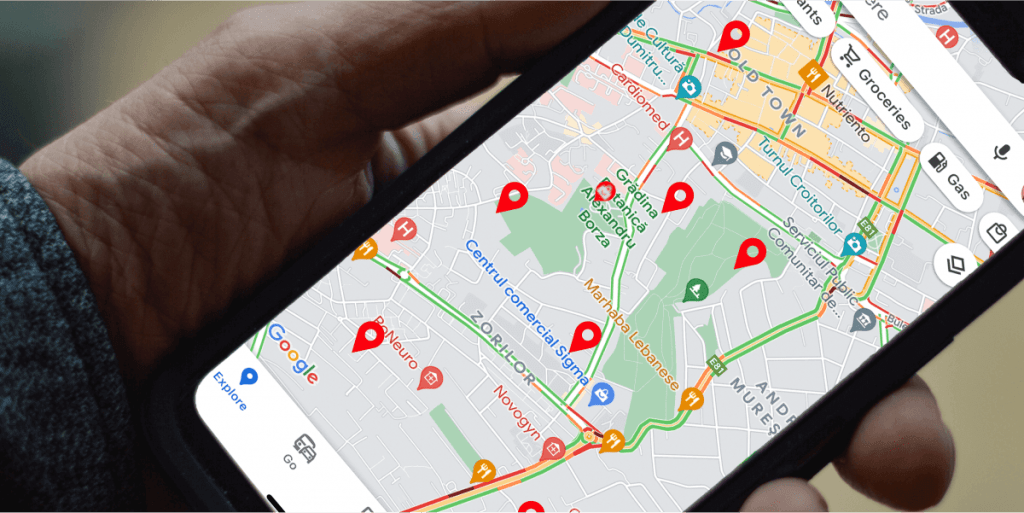How to Build a Mobile Marketing Strategy to Ensure Business Success
The mobile market is the fastest growing segment of the internet. According to Statista, smartphones generated about half of all website traffic globally. Nowadays, a mobile marketing campaign is no longer a nice-to-have but a mandatory part of your digital marketing strategy. Mobile optimisation and marketing efforts are crucial to ensure business success. Whether your business goals are improving user experience, increasing customer retention or boosting ROI, your marketers should possess knowledge from the mobile marketing field to help you deliver outstanding mobile experiences.
In this article, you will learn how mobile marketing works and how to build an effective mobile marketing plan to reach your target audience at the perfect time.
What Is a Mobile Marketing Strategy?

A mobile marketing strategy is creating and implementing a plan to help you reach your target audience through their smartphones. It’s not just about getting people to download an app or visit your website; it’s also about making sure they engage with your brand regularly. More than that, mobile marketing incorporates all digital marketing efforts to reach users on their mobile devices.
You can reach potential customers on the go, but you can also communicate and engage with them more personally at any time of the day. Mobile users do not depend on a particular time to shop, browse or search the internet. Therefore, being there for them 24/7 makes mobile marketing a fundamental asset for your business.
How Does Mobile Marketing Work?
Our advice to any business owner is to focus on mobile opportunities. Mobile use has outperformed desktop use since 2015, and digital content has changed from desktop-based to mobile-based. Digital marketers know that one of the most valuable skills you can develop is how to optimise a company’s mobile advertising campaigns. There’s no end to how long they may continue to be effective.
Digital marketing campaigns focusing on mobile should be strategic and the messages personalised to every device, whether we talk about SMS marketing, social media marketing, email marketing, content marketing, PPC (pay-per-click) marketing or SEO (search engine optimisation).
Mobile marketing is an essential component of any short-term or long-term marketing plan. Mobile marketing is a critical piece of the puzzle when building any short-term or long-term marketing plan. Therefore, to be effective, you must create a cohesive customer experience and offer them precisely what they expect from you on every platform you use for your strategy. You can drive brand value, connect with consumers in real-time, and boost sales.
According to eMarketer, the mobile audience in the US will be 55.7 million in 2022, and Adweek says that 79% of smartphone users have their phones on almost all day long but for two hours. Over 66.5% of the global population owns a mobile device. To take advantage of the growing mobile market, you should focus on offering flawless customer journeys and giving your audience what they expect. When sending out marketing messages for mobile consumers, make sure they are personalised as customers want to feel appreciated and unique. This way, your target market will likely engage with your mobile content more often in the future.
What Are the Challenges of Mobile Marketing?

It is essential for the marketing teams to know and understand the dynamic environment of digital marketing platforms. They should be able to adapt their digital marketing tactic to every network, platform and tool they use.
Let’s explore together the challenges of mobile marketing:
- The time people spend on their mobile devices is rising, and the number of social media channels and platforms to choose from to engage with your audience is also increasing. This is an excellent opportunity for every business to get its message to potential and current customers. However, for location-based marketing activities, users must opt-in to receive your marketing campaigns. More than that, you should follow the US data protection regulations and the European GDPR.
- Social media platforms are already optimised for mobile phones, and every social network works wonders as an ad platform. However, mistakes are penalised in the blink of an eye because of their fast spreading and immediate impact. Social media marketers must be extra careful when sharing their marketing messages across these platforms.
- You can reach every prospective customer and target audience anytime and anywhere across the world. However, digital channels and digital platforms are an ever-changing environment. Your marketing team should be aware of every change, no matter how small, and fastly adapt the digital campaigns to the new requirements.
- Mobile devices allow a more personal and engaging connection with consumers. However, you should adjust your visual campaigns to fit various mobile screens.
- Mobile strategies and marketing techniques allow you to reach different market segments and talk their language with your personalised content. However, before doing so, you should know how to do customer profiling and approach them in the right way. Moreover, mobile devices are personal items, and they will get frustrated and irritated if your message is irrelevant to them.
- Your online content can be delivered through location data. However, location targeting might be seen as a little bit invasive.
- Mobile marketing is cheaper than traditional marketing. However, to offer a seamless and consistent user experience, your website and other sales tools that you are using must be mobile responsive and optimised for mobile users.
- When building your digital strategy, you should take it into consideration and work towards your content going viral. However, remember that harmful content will go viral as fast as or even more quickly than good ones.
How to Build a Mobile Marketing Strategy to Ensure Business Success?
In this chapter, we will present some tips for building your mobile marketing strategies and taking advantage of online channels to reach business objectives and increase conversion rates.
Our first tip is to have a custom-centric campaign. Nowadays, people want to feel connected with brands, and they don’t buy product features anymore. They buy solutions for their issues.
The second tip is understanding how to promote your business to mobile-based customers. We recommend you make users want to invest in your products and services. Your content strategies will be the ones that attract customers and push them into your sales funnel.
Our third piece of advice is to make your marketing content clear and concise. Mobile users are on their devices for short moments during breaks, a commute, etc. They should understand and access your information fast, and your message should interest them. This way, they will stay engaged.
Now let’s see how you can build a mobile marketing strategy to ensure business success:
1. Optimise your website and landing pages for mobile
This is a crucial step to keeping your target audience on your website. Make sure that your content is visible and accurate on mobile devices. Fast mobile landing pages, content written based on user intent, an engaging user interface and an intuitive UX design are essential elements for a successful business. Make your mobile website intuitive, and use branded, high-quality visuals to spread your message to your audience. Keep in mind that an image-heavy website will affect the website loading times, so make sure you optimise them to decrease the web page speed. Update them frequently to get your message across and to fit your new content, and make sure they fit the screen size of mobile devices.
2. Know your audience

To build a successful mobile strategy and meaningful connections, you must know your target audience. We strongly advise you to make ideal customers profiles and buyer personas. This will help you create enhanced campaigns that will run only on the platforms where your audience is. Having insight into what social media channels your buyers spend the most time on, you can boost the mobile traffic to your website by showing them mobile content optimised for those specific platforms. If your buyers use Instagram, which is designed to be the most effective on mobile devices, you can reach them with content with a high percent rate of engagement. Social media posts, such as reels, have great engagement and are boosted by the algorithm.
3. Accessible call-to-action buttons
Any marketing campaign must include call-to-actions (CTAs) buttons throughout the content. These buttons invite potential customers to the next step in your sales funnel. However, you should pay attention to giving a natural feel to your CTAs. They should be consistent with your message and should not require too many steps. All your links that connect your brand with your audience should be clickable, and the destination of the URL should be consistent with the visual. For example, if you are showing a pair of sneakers and have added a link to your website, the open page should be the product page of the sneakers you are promoting.
4. Take advantage of mobile capabilities
By enabling text message marketing or an artificial intelligence chatbot, you can connect better with your audience, reduce bounce rate and increase conversion rate. People have their smartphones on them almost all day long, and if they opt for an SMS or email subscription, you can get your products and services in front of them way faster. You create urgency when you have a promotion or a sale for a limited time. The average click-through rate in text message marketing is 36%.
5. Use mobile-friendly email marketing
Email marketing campaigns should be visually appealing and contain CTAs and links that are clickable and interactive. Your emails must be mobile-friendly, no matter what your marketing content is about, a free demo, downloading an ebook, or sending the users to a landing page.
6. Think Local

We strongly recommend you consider your local customers as 1 in 3 mobile searches have local intent. People use their mobile phones to look for urgent interactions such as the nearest gas station, the nearest coffee shop, etc. Make sure you have a Google Business profile to match the user’s local intent and queries.
Our Advice on Mobile Marketing Best Practices
For a successful digital marketing mobile strategy, you must focus on how you deliver your content and how you can reach your target audience at the right time and on the right platforms. We advise you to stay informed on the latest mobile strategies and consider how to implement them for your business to increase brand awareness and increase the number of leads and conversions.
Here are some best practices we recommend to keep in mind when building your mobile marketing strategy:
- Be clear and to the point. Keep your messages and visuals clean. Avoid cluttered ads. Keep things simple with eye-candy visuals, clear messages and effective CTAs.
- Be local. As we mentioned before, people are looking for immediate interactions. Being there for them when they need you is crucial.
- Be mindful of your audience. Knowing your audience is the key to getting your business in front of them and speaking their language. First, it is essential to grab their attention, then offer the user experience they expect, and you will convert them in no time.
- Be bold and experiment with your strategies. Mobile marketing is a vast and resourceful field. We recommend you A/B test your strategies, learn from your competitors and implement what works best for your brand. You can try out ad extensions with Google Ads Enhanced Campaigns.
- Monitor and analyse your results. You cannot learn, improve your strategies or try other marketing techniques if you do not monitor and analyse your results. Check out your Google Analytics account to learn more about your customers, their behaviour, preferred platforms, etc. Check your Google AdWords if you implement mobile PPC ads to track the results, and use Google Search Console to find out more about your website’s performance and what to do to improve it.
Frequently Asked Questions
To enable your business to reach your mobile target audience.
A mobile-first strategy means you prioritise your mobile users. You are focusing all your efforts and shaping your business for mobile users first and desktop users second.
Yes! Mobile advertising is 30 times more effective than traditional ads.
The message can be the same, but it needs to be implemented and set differently.